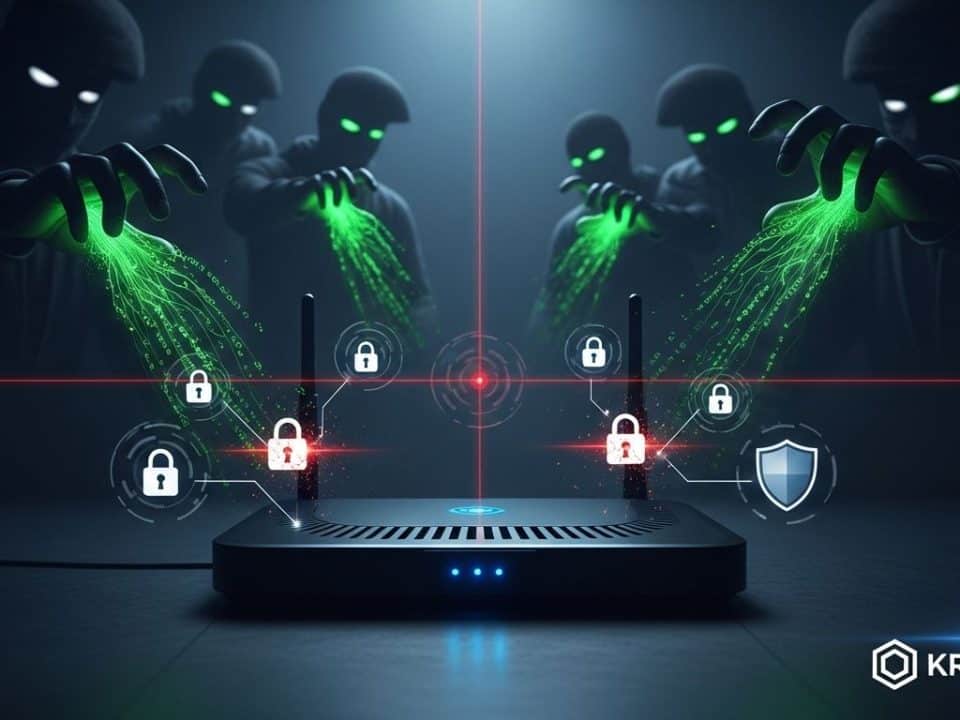
Why You Need a Password Manager: Stopping Credential Stuffing Attacks
November 25, 2025By the Team at Krypto IT | Cybersecurity Experts Serving Houston SMBs
When small to medium-sized business (SMB) owners think about cybersecurity, they often picture external hackers trying to breach the firewall. But one of the most persistent, costly, and sensitive risks comes from within: the Insider Threat.
The Insider Threat is not just about a disgruntled employee seeking revenge; it encompasses any risk posed by an individual who has authorized access to your organization’s physical or digital assets. This includes current employees, former employees, contractors, and partners. This danger is often overlooked because it leverages the most valuable currency in business: trust.
At Krypto IT in Houston, we know that because the insider bypasses perimeter defenses, their actions can lead to rapid, devastating damage—from catastrophic data leaks to widespread ransomware infections. Protecting your business requires shifting your security focus inward.
The Two Categories of Insider Threat
It’s crucial to distinguish between the two main types of insider incidents, as they require different prevention strategies:
1. The Negligent Insider (The Unintentional Leak)
This is the most common and often the most costly threat. These are loyal employees who make genuine mistakes that compromise security, driven by convenience, distraction, or lack of training.
- Common Mistakes:
- Falling for a sophisticated phishing or BEC scam and giving away corporate credentials.
- Losing an unencrypted corporate laptop or mobile phone.
- Storing sensitive customer files on an unsecured, personal cloud drive (Shadow IT).
- Failing to apply necessary software updates (patches).
2. The Malicious Insider (The Intentional Attack)
This individual intentionally abuses their access for financial gain, sabotage, or revenge. They may steal intellectual property to give to a competitor, steal customer lists for personal profit, or purposefully delete critical files before leaving the company.
- Common Actions: They leverage their deep knowledge of your network’s weakest points and the specific location of your “crown jewels” (most valuable data) to cause maximum damage quickly.
Four Pillars for Mitigating Internal Risk
Because the Insider Threat uses legitimate access, prevention requires a holistic strategy focused on people, policies, and continuous monitoring.
Pillar 1: Enforce the Principle of Least Privilege (PoLP)
This is the foundational technical control. PoLP dictates that every user should only have the minimum access rights and permissions necessary to perform their job—nothing more.
- How it helps: If a malicious insider or an account compromised by a negligent click has only limited access, the “blast radius” of the incident is contained. A compromised sales manager cannot access and delete the entire payroll database.
Pillar 2: Mandatory and Continuous Security Awareness Training (SAT)
Negligence thrives on ignorance. SAT is your best defense against unintentional leaks.
- Focus on Behavior: Training should be ongoing and focused on practical, modern threats: recognizing AI-powered phishing, properly verifying wire transfer requests (to stop BEC), and understanding the risks of external USB drives.
- Offboarding Protocol: Training must also emphasize the severe security risks associated with copying data before leaving the company, reinforcing the policy of zero tolerance for data theft.
Pillar 3: Continuous Monitoring and Anomaly Detection
You need technological eyes on your network to spot behavioral shifts that signal an intentional or unintentional compromise. Perimeter defenses are useless here; you need internal surveillance of activity.
- Krypto IT’s EDR and SIEM Tools: We monitor for activities that are highly irregular for a specific user: a sudden attempt by an accountant to download 5GB of customer files, or an employee logging into a server at 3:00 AM for the first time.
- Data Exfiltration Monitoring: Specific tools track and flag large, unusual transfers of sensitive data to external or unsecured cloud services, giving Krypto IT time to intervene and contain the leak.
Pillar 4: The Crucial Offboarding Policy
The moment an employee gives notice (or is terminated), your security team must immediately initiate a structured offboarding process. This is the period of highest risk for both malicious sabotage and accidental exposure.
- Immediate Access Revocation: All digital access must be revoked simultaneously: email, VPN, cloud apps (via IAM), and building access. This must happen instantly upon departure.
- Data Handover: Ensure all company data stored on personal devices (BYOD) is remotely wiped, and all company-owned hardware is collected.
- Legal Documentation: Documenting the process provides crucial evidence of due care should a dispute over stolen data arise later.
Krypto IT: Your Unbiased Partner in Internal Security
Addressing the Insider Threat requires implementing policies and technology without the emotional bias of personal relationships—a difficult task for many SMB owners.
Krypto IT provides the objective, continuous monitoring and structured controls necessary to manage this risk:
- Policy Enforcement: We implement and enforce technical controls like PoLP and access management across your entire infrastructure.
- Unbiased Monitoring: Our 24/7 SIEM/SOC services monitor all user behavior without bias, alerting us to suspicious activity immediately, regardless of who is involved.
Don’t let the trust you build with your employees become the weakest link in your security chain.
Ready to secure your business from within? Contact Krypto IT today for a confidential assessment of your internal access controls and offboarding protocols.




